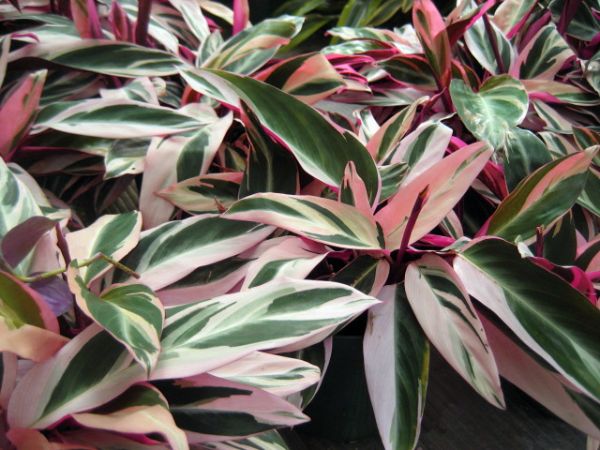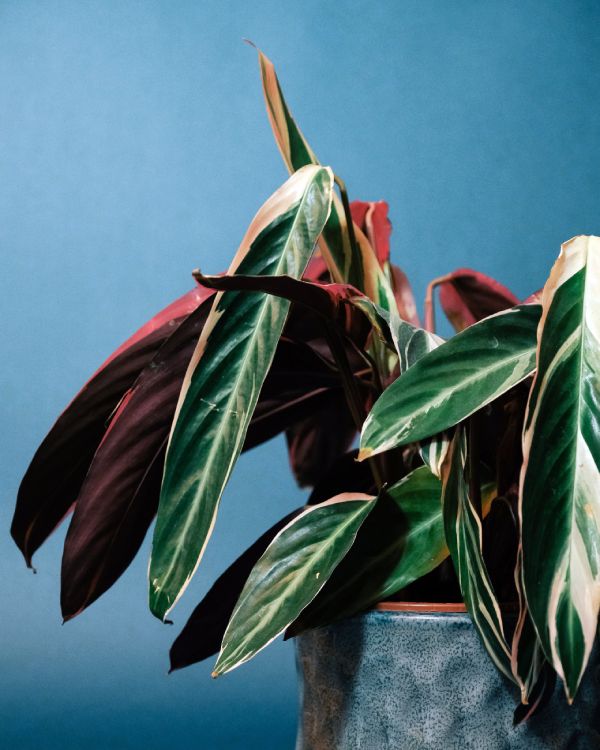Stromanthe Triostar (Stromanthe sanguinea) is a stunning, attractive, and impressive plant. This plant makes a striking addition to any home with tri-colored leaves like a starburst of green, white, and hot pink that resembles a watercolor painting.
Stromanthe Triostar is a stunning plant, but this houseplant can be a bit tricky to care for and can be a bit finicky. However, the result can be very rewarding if you can provide the perfect growing condition for it. Below, we'll discuss everything you need to know to ensure your Triostar shines.
Botanical Name
Common Name
Plant Type
Mature Size
Sun Requirement
Soil Type
Hardiness Zone
Pet Friendly
Stromanthe sanguinea
Stromanthe triostar
Perennial
2-3 ft.
Part sun
Light, well-draining soil
10-12 (USDA)
Yes
What Is Stromanthe Triostar?
The "Triostar" Stromanthe is a genus of flowering plants in the Marantaceae family. This cultivar is also referred to as "Stromathe Thalia", "Tricolor" and "Triostar." These humidity-loving houseplants are native to the Brazilian tropical rainforests, where they can grow to five feet in height! As a houseplant, it will top out at three feet tall. It is a member of the prayer plant family and has similarly particular care requirements.
It is a vividly tricolor plant with dark green and bright white leaves with a unique maroon leaf underside. Sometimes, the deep maroon will show through the cream markings as a light pink. The leaves are long, growing nearly straight upright until they get so tall that they start arching like a fountain.
What makes this plant unique is you will see leaves fold up at the low light of dusk night and open and turn their reflective white streaked side to the sun every morning.
This plant would produce flowers in March and April with proper care and the right growing condition. The tubular blossoms emerge above the foliage in loose clusters. They will open as orange-red buds and mature into a beautiful cherry pink, making this plant even more desirable to plant lovers.

Source: Flickr
Stromanthe Triostar Care Requirements
Light
Stromanthe Triostar would typically be growing under a rainforest canopy - so they need lots of highly filtered light. Its leaves can handle direct sun in the morning, but the hotter noonday direct sunlight will scorch them, so it's best to keep them away from the hot sun.
While these plants don't like direct light, they will also suffer in dark spots. An east-facing light source will be your best bet for bright, indirect light. This cultivar can handle insufficient light, but it will lose variegation on its leaves as a result.
Water
Finding the perfect watering schedule for any prayer plant can be tricky. They need to have moist, but not soggy, soil. Common advice is to water when the top inch of soil is dry. However, as we'll discuss below, the peat-heavy soil that they prefer makes this hard to gauge. Many Stromanthe Triostar owners instead judge how much moisture is in the soil by lifting the pot and seeing how heavy it is.
Not only are Stromanthes particular regarding how frequently they are watered, and they are also picky about the type of water used. Tap water doesn't work well, as this plant is sensitive to the chemicals added to most municipal waters. Distilled water, filtered water, and rainwater are the best choices.
When it's time to water, take your plant to a sink and pour enough water that it runs out of the drainage holes of the plant's pot. Set it in the sink for 15 minutes or so to give excess water a chance to drain, then place it back in its usual spot.
Temperature
Stromanthe Triostar can be grown in a typical household temperature and has limited cold tolerance. The ideal temperature range is between 65 and 80 degrees Fahrenheit. This tropical plant does not tolerate cold well, so keep it well away from cold drafts, air vents, and fireplaces.
While most readers will be growing Stromanthe Triostar as a houseplant, it can be used as an evergreen perennial in USDA zones 9b to 11. Since it spreads through underground rhizomes, it works particularly well as a ground cover.
Stromanthe Triostar can survive temperatures down to freezing - although, more accurately, its rhizomes will survive. The beautiful foliage will die back until the following spring.
Humidity
This houseplant requires warm temperatures and a humid environment of at least 50 percent relative humidity! Regardless of how humid your summers are, the air moisture probably will dip below that during the winter, and you'll need to boost the humidity levels around your plant.
Grouping
Group your Stromanthe Triostar with other humidity-loving houseplants. All plants give off moisture naturally, and grouping moisture-loving plants together will cause them to raise the humidity level in the space directly around them.
Pebble Tray
Set your plant on a pebble tray. Fill a tray with pebbles, add water to just below the top of the pebbles, and set your plant on it. Make sure the pot isn't sitting in the water! As the water evaporates, it will increase the air moisture around your plant.
Misting
Use room temperature water to mist the air around your Stromanthe Triostar daily.
Humidifier
One of the easiest ways to increase humidity in your home is to use a humidifier. A humidifier can be expensive, but it will increase the humidity level quickly, and to the percentage you like.
Soil
The rhizomes of Stromanthe Triostar prefer a slightly acidic, peat-based potting mix. If your plant didn't arrive in this type of foil, you could buy peat soil from most garden supply centers. While prayer plants prefer this type of soil, it does make it trickier to determine when the soil is dry or moist. The color of the soil doesn't change much, and it typically won't feel dry until it is very dry!
Fertilization
Your Stromanthe Triostar will do best with regular fertilizing with a balanced fertilizer or worm compost tea. Fertilize every other week during the spring and summer.
Propagation
Most Stromanthe cultivars produce sterile seeds, so root division is the best way to propagate Stromanthe Triostar. Stromanthe's spread via rhizomes.
In early spring, before the plant puts out new growth, unpot a healthy mother plant. Gently shake off loose dirt, gently separate the clumps, and be careful with the root ball.
Determine which rhizome clump is the best candidate. Look for one that has at least three leaves coming up from it!
Carefully break the rhizome clump off from the rest, or use a clean, sterilized knife.
Fill a pot with drainage holes with fresh soil and gently replant both the mother plant and the propagated rhizome.

Source: Pexels
Pruning + Cleaning
You won't need to prune your Stromanthe Triostar regularly. If you notice any yellow leaves or brown edges that should be cut away, use clean, sterilized scissors. Remove any dead leaves if present.
The plant's leaves will need to be cleaned weekly, however. It's good to do this whenever you water it. Simply use a damp cloth to wipe the tops and bottoms of the leaves, removing any dust that would prevent them from photosynthesizing well.
Common Problems
Stromanthes are typically pest and disease resistant. However, here are some to look out for:
Insects
Look out for mealybugs, scale, and spider mites. These are common plant suckers. You can treat an infestation of any insect using a neem oil spray or mild horticultural soap.
Disease
The diseases Stromanthes typically come down with are all fungal. High humidity and too much water can cause fungal disease. This can be tricky because these plants want their soil moist and love humidity! Try to water them only in the morning or on sunny days, when the indirect light can help evaporate any moisture that gets on the leaves.
Root Rot
Be careful not to overwater as it can lead to root rot.
Browning Leaves
If your Stromanthes leaf edges or leaf tips turn brown, it's most likely due to dry air. To remedy this, supply the plant with more humidity. One of the easiest ways to add humidity to the space is to add a humidifier.
Growing Outdoor
Stromanthe Tristar can be grown outdoors in a warm area like Zone 9 or higher. When growing this plant outdoors, place it in a shaded area with some morning sun or in the full shade if possible.
Is Stromanthe Triostar Pet Friendly?
Yes! Stromanthe Triostar, like other prayer plants, is completely safe for pets and children if accidentally consumed.
